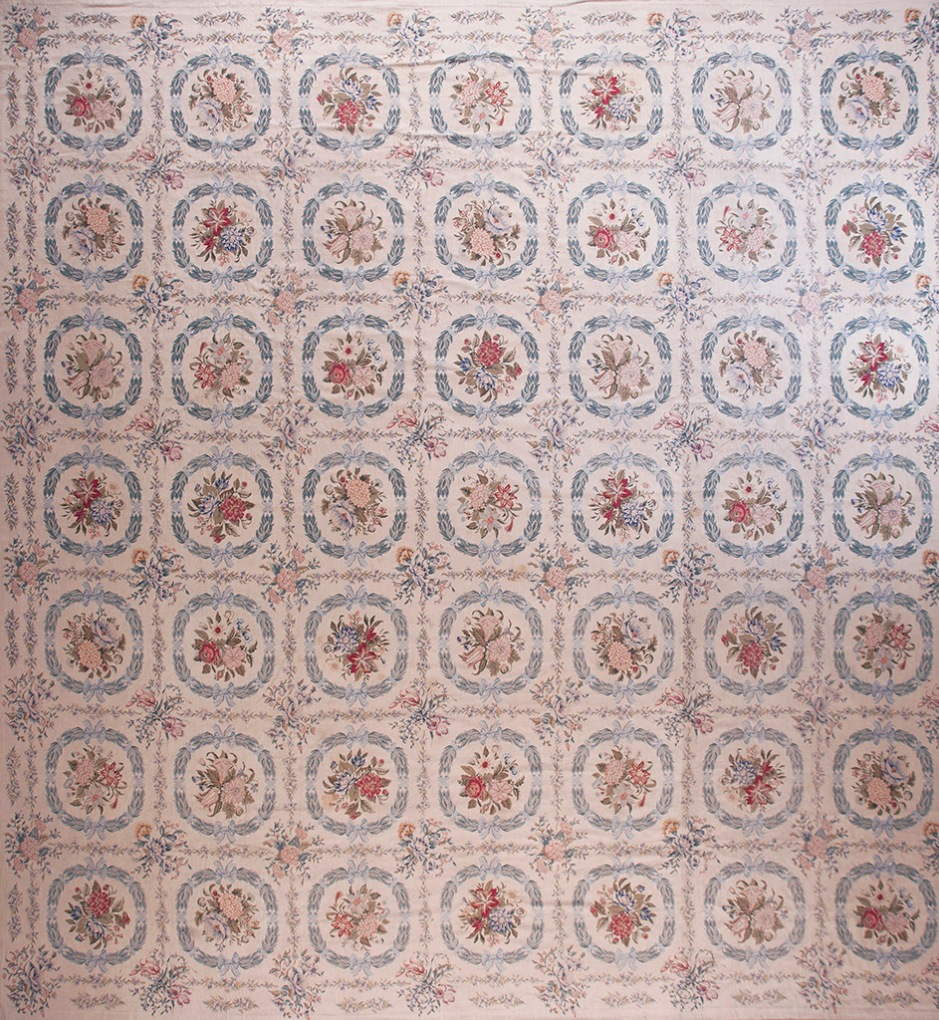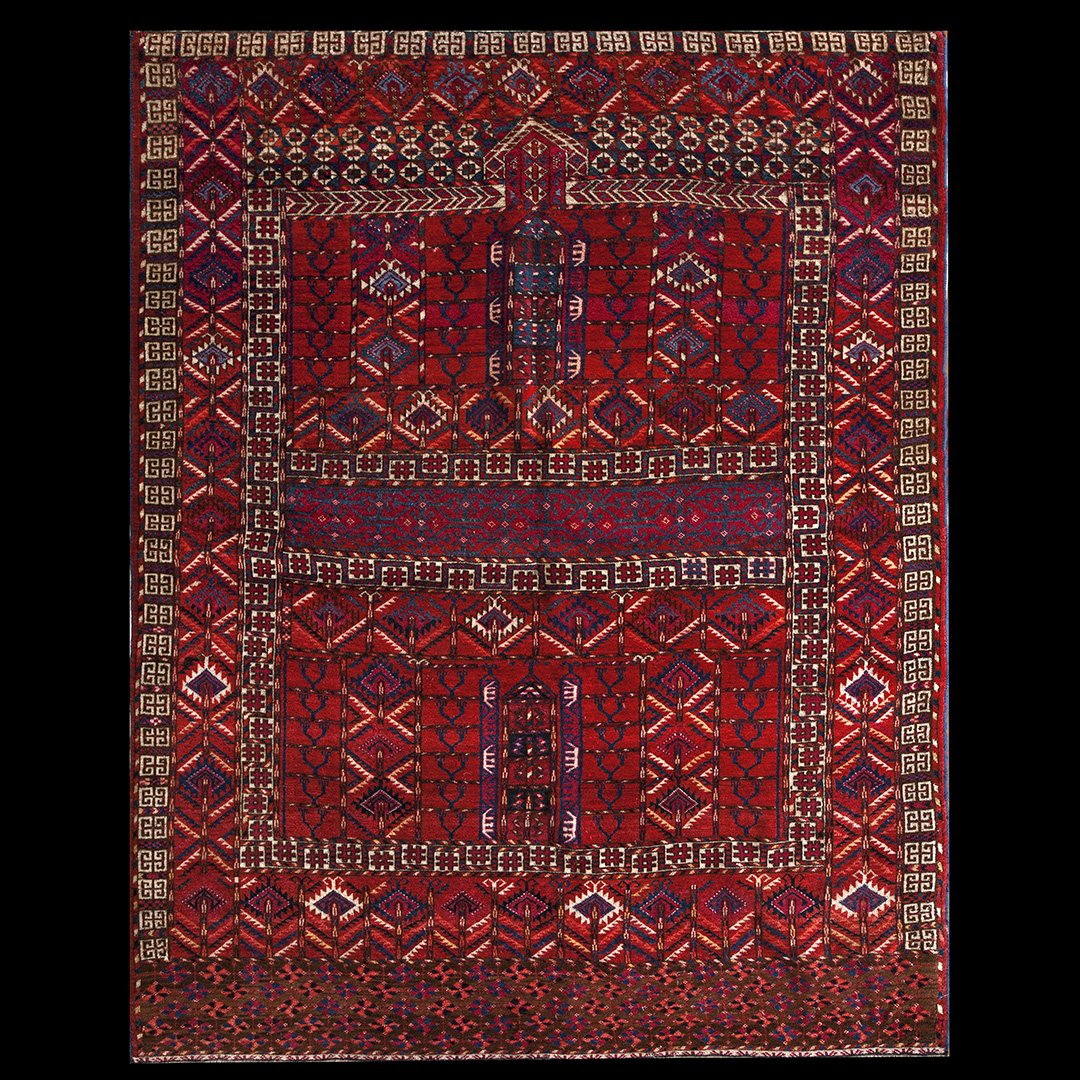
Antique Northeast Persian Carpet
Khorassan Province
Later 18th Century
Khorassan was a truly enormous Persian province, once extending all the way to the Oxus River, bordering on true Central Asia. Even After the eastern parts were lost in the Afghan invasion after 1722, the province still encompassed vast areas of desert and steppe with important cities like Meshed and productive farmland. Carpet weaving in the area goes back centuries with Herat, the old capital and now in Afghanistan, famous in the 16th century for its fine rugs. Our antique Persian carpet is not from Herat, but was probably woven in the area around Qain (the Qainat) or more likely in the town itself as it has, as we shall see, all the marks of an urban production of the period.
After the fall of the Persian Safavid ruling dynasty in 1722, there was a decided fall off in patronage as the nation descended into invasions and disorder. As a result, the remaining carpet workshops cut costs to survive and this meant, among other things, the elaborate medallion designs and the designers who conceived them were replaced by repeating patterns derived from textiles which could be easily and elegantly executed in pieces of any size or format. Thus appeared the now iconically Persian Herati, Gol Hennai, Mina Khani and Boteh patterns. Our design is a particularly felicitous variant on the Gol Hennai pattern. A primary diamond lattice is formed by a repeat of four cypresses or leaves framing a large rosette and smaller rosette bosses uniting the cypresses. A thinner, secondary lozenge lattice connects the cypresses and large rosettes. This pattern is found in both northeast and northwest Persian rugs, runner and large carpets. As to where it originated, that is unsure, but by the early 19th century it was in use both in Khorassan and in Azerbaijan in early antique Heriz carpets. In both areas light grounds, ivory as here, were the preferred overall tonalities.
The red-orange main border with in and out main palmettes, sickle leaves and smaller rosettes, all linked by double angular vines seems to appear about the same time as the field pattern, and the navy blue connected “S” guards are frequent accompaniments in both weaving areas. In sum, our 21055 is a perfect embodiment of a period style. Khorassan would thus seem to be the place of origin for the field /border design combination around 1750 or so.
The size and perfection of execution as indicated by the pattern balance in all directions implies an experienced and highly professional workshop working for discerning patrons who expected an artistically and technically superior product. Although many Persian carpets of the period are long and narrow, there are certainly exceptions and 21055 clearly predates the period of Western export demand.
The foundation is all cotton and the woolen pile is tied with the Khorassan version of the jufti knot (on four warps rather than two), giving a lighter handle than usual. In a culture where only unshod feet touch a carpet, this still gives plenty of wearability. Our piece is in good condition for its age and proper care will give it many more years of attractive appearance. All the colours are from natural sources; indigo for the blue and either madder or cochineal for the reds. Yes, you can make oranges from cochineal.
There are very few carpets of this post-Classic period surviving, especially in this large size and ultra-desirable colour scheme. Our carpet 21055 is a particularly attractive solution of a perennial question: how to cover a large floor area without excess busyness, keeping formality without rigidity and authenticity without making an overt issue of it.





